Precise cutting is as important as accurate sewing to the construction of a garment. If the scissors are chewing instead of slicing it will be impossible to sew an exact distance from the edge. An eighth of an inch cutting error in four seams will equal a one inch change in the finished garment. Don’t waste time and talent on a project due to poor quality tools.
Different scissors are needed for different parts of a sewing project. For cutting a pattern layout, an 8 - 9 inch pair of bent handled shears are best. The large bow (finger loop) should slide along the table top while the scissors are being used. Picking the shears up off of the table while cutting will cause the layers of fabric and the pattern to shift. Take long deep bites with the shears, slide them forward and take another deep bite. The next pair of scissors is a small pair of thread nips. These six inch scissor are spring loaded in the open position. Keep them right next to the sewing machine. To use them, all you do is grab and squeeze. Do not use them for anything except threads. The last pair of scissors is a 5 - 6 inch pair of tailor points. These are for clipping curves and doing other close work. They are much easier to work with in tight areas than shears.
Spend some money on your scissors, buy quality. Keep them in good shape by cleaning the fabric lint off of them after each use and put a tiny drop of oil on the pivot point occasionally. After oiling wipe them down carefully and cut up some scraps to remove excess oil. Quality scissors that are well cared for can last a lifetime. Rotary cutters can replace scissors for some jobs.
Rotary cutters are wonderful for cutting fabric, but they are a lot like computers. Mistakes can be made twice as fast. They are rolling razor blades and can easily cut fingers or anything else that gets in their way. If a pin is rolled over while cutting the blade is ruined. It will skip a thread ---skip a thread---skip a thread at that spot because of the damage to the blade. There are blade sharpeners out there but I have never heard good things about them. Blades must be replaced and they can be expensive. Blades are brand specific, they will only fit one type of handle. Be sure to dispose of old blades carefully. Put them in a sharps container not in a trash bag. Someone reaching into the trash could get a nasty cut.
There are several sizes of rotary cutters. The ones that are used most often are 45 mm and 28 mm. The smaller one is perfect for tight corners, curves and circles. For your first purchase get the 45 mm, for general sewing. Keep the package as a reference for changing blades.
Cutting mats are needed for rotary cutters. Get the biggest one that is possible, considering the size of your table and the price. They can be expensive and do not last forever. Grooves can be cut into the mat that will result in skipped threads. Skipped threads caused by a bad blade or a grooved mat can make pulls in the fabric when it is picked up. Mats must be stored flat and away from sunlight and heat or they will warp.
To use rotary cutters, plastic rulers are needed. Look in the quilting section for the best selection. A good length is 18 to 24 inches and 2 to 4 inches wide. The wider width keeps fingers out of the way and gives a better grip on the fabric. Do not try to use an old wooden yard stick. The rotary cutter will cut into the wood. Hold the ruler by pressing the left hand finger tips to the ruler firmly at the start of the cut. Position the blade next to the ruler and cut up about six inches. Move the left hand forward like an inch worm. Cut and inchworm again. This procedure keeps the most pressure on the ruler even with the blade so the ruler does not move. Be sure and press down firmly and evenly with the rotary cutter. Make one smooth firm pass. Do not roll it back and forth (this is not pizza) that will cause a ragged edge. Hold the cutter blade straight up not at an angle.
One more cutting tool is a small snap-off razor knife. These are little razor blades in a handle. When one gets dull just snap it off and there is a fresh one. Never cut button holes with scissors or the seam ripper. Scissors are not fine enough and the seam ripper will rip right past the end of the button hole. Before cutting a button hole apply a small amount of Fray Check to the cutting line on the back. After it dries carefully slice it open with the razor knife. This will produce neater smoother button holes without any mistakes.
Quality cutting tools and techniques reduce frustration, increase accuracy and result in better projects. Many sewers cut several garments at once when they are in a cutting mood. Then they can sit down and sew when ever they have a few minutes.
